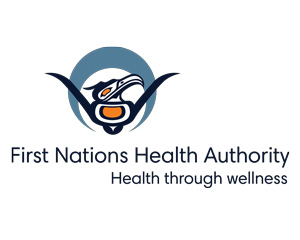
International Day of the Worlds' Indigenous Peoples on August 9th represents an opportunity to highlight the strength and resiliency of Indigenous peoples. With this year's theme focusing on Indigenous Languages, First Nations Health Authority acknowledges the important linkages between language and wellness and the urgent need to preserve, revitalize and promote our languages.British Columbia is home to 34 unique First Nations languages, accounting for 60% of First Nations languages across Canada. First Nations languages are rooted in our knowledge and values and they hold relationships to Creation, the land, identity, roles, family and community. This is why Knowledge Keepers and Elders say that working to revitalize our languages is one of the most important and fruitful ways to promote healthy and self-determining Nations, communities and people (Brown et al, 2012). Connecting to culture and identity by way of learning our language is also one of the best ways to break out of the cycle of trauma.
Although the importance of language is well-known to First Nations, the linkages between First Nations language use and improved health and wellness are also showing up in academic literature. For example, studies from across the globe are finding that people who use or have knowledge of their language have lower rates of diabetes, drug and alcohol use, and many other improved health outcomes (Hallett et al., 2007; Oster et al. 2014; Whalen et al. 2016).
Many Nations across BC are revitalizing their languages within their own lives and communities and are experiencing many positive benefits. In the words of Yvonne Joe, Nłeʔkepmxcín language apprentice, "learning my language has been an amazing journey that I wouldn't trade for any monetary value because it is priceless. My identity is slowly emerging and I'm beginning to feel whole and powerful as a woman of my Nation!" (First Peoples' Cultural Council, 2018, p. 28).
There are so many ways to connect to language, culture and identity – and these efforts are so important because they will serve future generations to come. Of course, most language revitalization efforts are championed on the ground, within First Nations, but there are also some exciting initiatives happening in the digital landscape:
• Google Earth's Celebrating Indigenous Languages Project - 55 Indigenous language speakers to share traditional greetings, favourite sayings and meaningful songs. It features Hul'q'umi'num', a language spoken by peoples of Vancouver Island from Snaw-naw-as (Nanoose Bay) to Malahat (Mill Bay).
https://www.cbc.ca/news/indigenous/google-earth-indigenous-languages-1.5240672
• FirstVoices Keyboard App for Apple and Android phones - contains keyboard software for over 100 languages, and includes every First Nations language in Canada. https://apps.apple.com/ca/app/firstvoices-keyboards/id1066651145
• FirstVoices - is a suite of web-based tools and services designed to support BC First Nations engaged in language archiving, language teaching and culture revitalization.
https://www.firstvoices.com/explore/FV/sections/Data
The connections between language, culture and wellness are clear, and on the International Day of the World's Indigenous People, I raise my hands to all of those individuals and communities making efforts to revitalize your languages.
In wellness,

Dr. Evan Adams
"Throughout the world, Indigenous languages are being lost, and with them, an essential part of Indigenous identity. Language revitalization can be seen, therefore, as a health promotion strategy"(King, Smith, & Gracey, 2009, p.78)
"Language has a vital role in the mental, physical and emotional health of First Nations communities in B.C. Language connects us to our culture, history, spirituality and land, which are the foundations of personal and community wellness.(First Peoples' Cultural Council, 2018)
"Traditional culture and language were described as one and the same, and the blueprint for survival and health in First Nations. Self-determination"(Oster, Grier, Lighting, Mayan, & Toth, 2014 p.7)
"Elders always speak of the importance of our language. Who we are is determined through our language "Providing an opportunity for the development of a healthy, supportive relationship is central. Indigenous knowledge and experience highlights the importance of relationships with all things within Creation" (Restoule, 2019, p.20)
"Land, water and territory permeate all aspects of First Nations mental, physical, spiritual and emotional well-being in complex and interconnected ways. They form the basis of Indigenous languages, systems of governance, and identities." (Draft Population Health and Wellness Agenda, 2018)
References:
- First Peoples' Cultural Council. Report on the Status of B.C. First Nations Languages: Third Edition. 2018.
- Brown, H. J., McPherson, G., Peterson, R., Newman, V., & Cranmer, B. (2012). Our land, our language: Connecting dispossession and health equity in an indigenous context. Canadian Journal of Nursing Research, 44(2), 44–63.
- Hallett, D., Chandler, M. J., & Lalonde, C. E. (2007). Aboriginal language knowledge and youth suicide. Cognitive Development, 22, 392–399.
- King, M., Smith, A., & Gracey, M. (2009). Indigenous health part 2: the underlying causes of the health gap. The Lancet, 374(9683), 76–85.
- Oster, R., Grier, A., Lighting, R., Mayan, M., & Toth, E. (2014). Cultural Continuity, Traditional Indigenous Language, and Diabetes in Alberta First Nations: A Mixed Methods Study. International Journal for Equity in Health, 13, 92.
- Restoule, B., Returning to the Teachings for Health and Wellness. First Nations Primary Care and Mental Health and Wellness Summit:. 2019 May 22-24; Vancouver, Canada.
- Whalen, D. H., Moss, M., & Baldwin, D. (2016). Healing through language: Positive physical health effects of indigenous language use. F1000Research.

